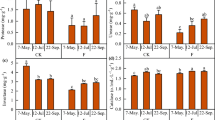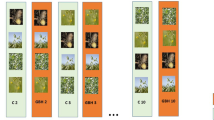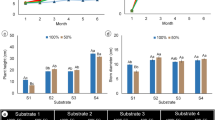Abstract
VARIOUS investigators have reported that various environmental factors, such as temperature, moisture and light, influence micro-organisms in the vicinity of plant roots in two ways: directly, by affecting the rate of growth and multiplication of these organisms and influencing the availability of nutrients in the soil; and indirectly, by controlling plant growth and thereby affecting the nature and amount of root excretions1. Various factors affecting the interaction of micro-organisms and plant roots, such as the nature and age of the plant, the nature and treatment of the soil, and moisture content, have been studied by a number of workers2,8. Because seed treatment with fungicides is likely to influence the development of fungi in the vicinity of the roots of plants raised from treated seeds and because the consequences of any changes in the balance of micro-organisms in the soil could be harmful4 or beneficial5 to the plant, it was considered worthwhile to carry out a preliminary investigation of the effect of seed dressing with ‘Granosan’ on the prevalence of fungi in the vicinity of the roots of cotton plants.
This is a preview of subscription content, access via your institution
Access options
Subscribe to this journal
Receive 51 print issues and online access
$199.00 per year
only $3.90 per issue
Buy this article
- Purchase on Springer Link
- Instant access to full article PDF
Prices may be subject to local taxes which are calculated during checkout
Similar content being viewed by others
References
Rouatt, J. W., Peterson, E. A., Katznelson, H., and Henderson, V. E., Canad. J. Microbiol., 9, 227 (1963).
Katznelson, H., Lochhead, A. G., and Timonin, M. I., Botan. Rev., 14, 543 (1948).
Starkey, R. L., Bacteriol. Rev., 22, 154 (1958).
Bowen, G. D., and Rovira, A. D., Plant Soil, 15, 166 (1961).
Gerrevsen, F. C., Plant Soil, 1, 51 (1948).
Tolba, M. K., Salama, A. M., and Ali, M. I., U.A.R. J. Bot. (in the press).
Warcup, J. H., in International Symposium, 3 (Liverpool University Press, 1960).
Maciejowska, Z., and Williams, E. B., Canad. J. Microbiol., 9, 555 (1963).
Martin, J. P., Soil Sci., 69, 215 (1950).
Johnson, L. F., Phytopath., 47, 631 (1957).
Waksman, S. A., Soil Sci., 3, 565 (1917).
Werkenthin, F. C., Phytopath., 6, 241 (1916).
Jensen, H. L., Soil Sci., 31, 123 (1931).
Sabet, Y. S., Bull. Faculty Sci., Egyptian Univ., 5, 1 (1935).
Waksman, S. A., in Soil Microbiology (John Wiley and Sons, Inc., New York, 1952).
Garrett, S. D., New Phytologist, 50, 149 (1951).
Author information
Authors and Affiliations
Rights and permissions
About this article
Cite this article
TOLBA, M., SALMA, A. & ALI, M. Effect of Seed Dressing with ‘Granosan’ on the Prevalence of Fungi in the Root Zone of Cotton Plants. Nature 211, 1217–1218 (1966). https://doi.org/10.1038/2111217a0
Issue Date:
DOI: https://doi.org/10.1038/2111217a0
This article is cited by
-
Selective effects of two systemic fungicides on soil fungi
Mycopathologia (1982)
-
Selective effects of five pesticides on soil and cotton-rhizosphere and-rhizoplane fungus flora
Mycopathologia (1978)
Comments
By submitting a comment you agree to abide by our Terms and Community Guidelines. If you find something abusive or that does not comply with our terms or guidelines please flag it as inappropriate.



